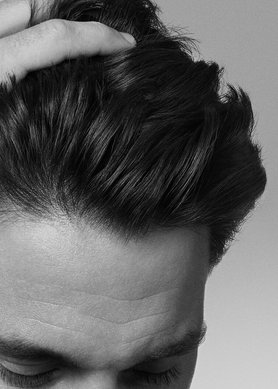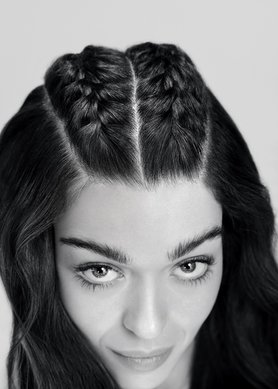What is dandruff?
The scalp microbiome - and dandruff
To understand why we get dandruff, we must first recognize the scalp hosts a world of its own. Each square centimeter is home to between 10,000 to 100 million microorganisms – principally bacteria and yeast(3). This ecosystem is referred to as the scalp microbiome. Research has allowed experts to pinpoint which of these microorganisms plays a significant role in dandruff: a certain strain of yeast called Malassezia. This yeast is found to dominate the microbiome on scalps of people with dandruff(4).
Recognizing two types of dandruff
There are two types of dandruff. Dry dandruff and oily dandruff – known as adherent dandruff– for the self-explanatory reason that it tends to stick onto the scalp. Dry dandruff, characterised by its flaky texture and fine, whitish or grey particles, tends to fall liberally. Greasy or adherent dandruff, on the other hand, where thicker, stickier and more oily flakes accumulate on top of each other, occurs when there is an overproduction of sebum on the scalp. Adherent dandruff is generally recurring since sebum promotes the development of the Malassezia yeast, creating a vicious circle. Both types of dandruff can irritate, although this is not always the case.
Exploring the reasons for dandruff?
Dandruff occurs for a number of reasons. First it is important to check it is not in fact psoriasis, an inflammatory skin condition, when intense flakiness can be accompanied by irritated redness. Various factors: from stress to hormonal changes, to a disturbance in the skin’s PH balance, to the scalp drying out from winter central heating, are all implicated in the excess sebum production involved in dandruff and to a scalp environment favorable to colonization by the Malassezia yeast. In fact, winter, is known as the “dandruff season” in temperate regions(5) while dry season exacerbates dandruff in Thailand for instance(6).



